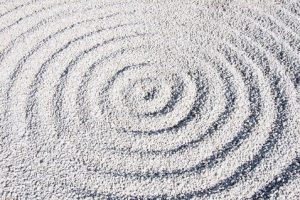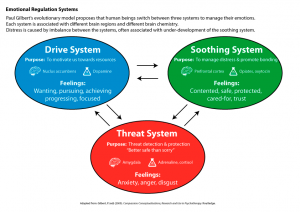How to Combat Anxiety – Part 2 of 5 Miniseries – Practical Ideas and Tips to Help Settle and Soothe the Mind and Body
USING OUR SENSES
Our brain processes the world through our senses- what we see, feel, hear, smell, and taste. How we think, dream, and how our memories are stored are all encoded through our senses (e.g. imagining the sound of someone’s voice, smelling cookies and remembering a time you baked cookies with your favourite aunt, dreaming of a familiar place or person). Bringing awareness to our senses can be a powerful tool to help us cope with anxious and negative thoughts and feelings.
We can use our senses to tune into the present moment and to our current environment, which can help our mind and body settle
By doing this, we help bring our prefrontal cortex (reasoning and logic part of the brain) online and tune into the “now”. This can be something that can be really helpful if we are feeling upset, overwhelmed or just overly activated as it can help us to settle and soothe our mind and body.

Photo by Solstice Hannan on Unsplash
What are some ideas you can try to bring awareness to your senses?
The 54321 strategy
This strategy uses a countdown using each of your senses. The most commonly known way that I know of practicing this strategy is going through each sense and pairing it with a number. For example, using your sense of sight, name 5 things you can see in your current environment right now.
***You can name things aloud if you want but you can also name them in your head, both can be effective!
Next, name 4 things you can feel right now. For this one, consider internal and external feelings. Internal feeling like “I’m worried, I’m stressed, I’m tired” and external feelings like “I can feel my feet on the ground” or “I can feel the back of legs on the chair”.
Next, name 3 things you can hear right now. Next, name 2 things you can smell right now. Sometimes smell can be a little bit tricky, if that is your experience, perhaps you can access the smell of your clothes or your hair or even just the smell of the air.
Lastly, name 1 thing you can taste right now. I like to use a variation on this one and I often invite teens to say one statement that lets them know they are going to be ok in some way, for example “I am ok”, “I will get through this”, “I’ve got this”., “I am going to be ok”.

Photo by Matthew Payne on Unplash
54321 Variation
Another way to try this strategy is to use the countdown idea and this time honing in on some of the senses that are generally more accessible. I mean senses that are a little easier to access for most people for example, our sense of sight, touch/feel, and hearing. This time you would begin a countdown that is naming things like this: 5 things you can see right now, 5 things you can feel right now, 5 things you can hear right now. Next, name 4 things you can see right now, 4 things you can feel right now, 4 things you can hear right now. Next, name 3 things you can see right now…… well you get the point and you would continue until you get to naming 1 of each of the senses. This variation can be helpful if you are needing a little extra time to get your “thinking brain” back online.
The insight timer blog also has an article on the 54321 strategy, a variation called the HALT technique, and an audio clip with a guide 54321 exercise.

Photo by Hayes Potter on Unsplash
Tuning into one specific sense
In this strategy you choose a specific sense to focus on and you can give yourself a few different challenges. One example of this is a hearing challenge, where you name as many things as you can hear in 10 or 20 seconds.
Another strategy is distance hearing, where you begin by noticing sounds you can hear as a part of you (inside) such as your breathing or your stomach noises (especially if lunch time is approaching!). Next, you distance your hearing and name sounds (things, people, animals, etc.) you can hear around you and nearby. Next, you distance your hearing even more and challenge yourself to name sounds you can hear in the next room or further until you can’t notice any new sounds.

Photo by Alex Jackman on Unsplash
Another idea using our sense of sight is spot a colour. You start by choosing a colour and naming as many things as you can that are the selected colour or a close variation of that colour. You can lengthen this exercise by repeating it using every colour of the rainbow. I particularly like this one in an outdoor setting, especially in fall or spring when a variety of colours are available to us.

Photo by Sharon McCutcheon on Unsplash
Our sense of smell is another option. If there are smells that you experience as comforting or soothing (for me that would cinnamon or the smell of a warm pot of homemade spaghetti sauce- yes I like food!), perhaps you can have those smells accessible for you. Now, having the smell of homemade spaghetti sauce on hand is not super practical, but if there are other scents like lavender, rosewater, peppermint, citrus, or a blend of essential oils, it is much easier to work with.
Some people will use roll on scent sticks or lava bead bracelets with a few drops of a soothing scent. If you find the smell of your laundry soap of shampoo, you can use your clothes or hair, and take some sniffs of those. I would add one point of caution around our sense of smell- smell is highly linked to memory, so I would advise testing out a smell before you use it in a situation where you are upset and are trying to settle and soothe.
If you found this post helpful, spread it by emailing to a friend or sharing it on Twitter or Facebook- Thanks! Also, be sure to come back and check out Part III, where I’ll be talking about using breathing to combat anxiety.
 Chantal Côté (she/her) is a psychologist and teen life coach living in Calgary, Alberta. After over a decade in non-profit and community mental health, Chantal started Pyramid Psychology, a practice dedicated to supporting teens – a population she is constantly amazed by. Chantal is on a mission to help 100,000 teen girls (and their parents) build bulletproof mindsets so they can weather the ups and downs of life. As part of this goal, Chantal has had the privilege of speaking at various events – virtual and live – to support teens and parents.
Chantal Côté (she/her) is a psychologist and teen life coach living in Calgary, Alberta. After over a decade in non-profit and community mental health, Chantal started Pyramid Psychology, a practice dedicated to supporting teens – a population she is constantly amazed by. Chantal is on a mission to help 100,000 teen girls (and their parents) build bulletproof mindsets so they can weather the ups and downs of life. As part of this goal, Chantal has had the privilege of speaking at various events – virtual and live – to support teens and parents.
Outside of this passion, Chantal is often in nature, writing poetry, playing ball hockey and hanging out with her loved ones.
Each week, Chantal writes a blog article in response to issues she hears from the parents and teens she connects with. If you have something you’d like to read more on – email ideas and questions to info@pyramidpsychology.com or DM us via Instagram or Facebook.























